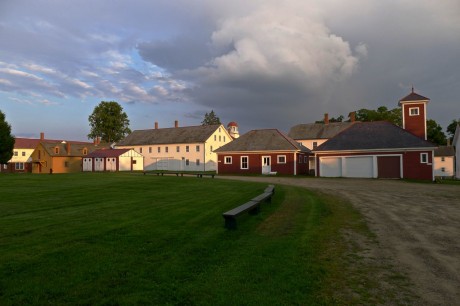We are fortunate to have the legacy of two Shaker communities located here in central New Hampshire. Now historical museums, the former villages provide great opportunities for the study of material culture, historic preservation, and industrial archaeology.
Back on April 26, Prof. David Starbuck took his Archaeological Methods (HPR 5600) class to Canterbury Shaker Village in order to examine the remains of a once extensive series of water-powered factories on the property. On May 14, the same class met at the Enfield Shaker Museum to learn about its ongoing preservation projects, especially those at the Great Stone Dwelling, stretching from basement to bell tower. Students had an opportunity to meet (and dine) with board members, staff, and volunteers responsible for all aspects of this impressive and painstaking work.
On July 31, Prof. Jim Garvin guided his Historic Methods & Materials (HPR 5310) students on an unusual tour of the Canterbury Shaker Village which focused on the variety of building materials and construction methods exhibited by the village’s 24 extant structures, dating from 1792 to 1923. Pressed brick, chiseled granite, crown glass, cut nails, white lead, roofing and siding of all kinds were among the topics explored.
PSU’s Historic Preservation program teaches students to see the layers of time imprinted on our landscape by architectural and decorative styles, by building materials and construction methods, by millponds and archaeological features. The Shaker villages bear the imprint of the the group’s creativity, ingenuity, and purposeful work. The villages also reflect the Shakers’ selective interaction with the wider world — leaving us with fascinating places to practice seeing time.

